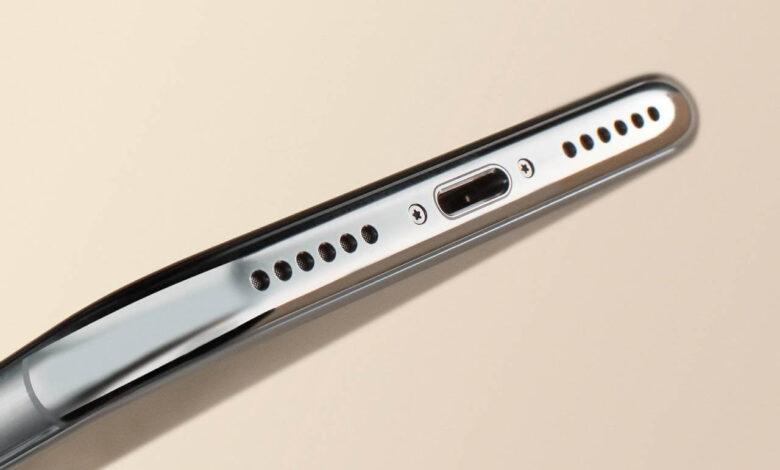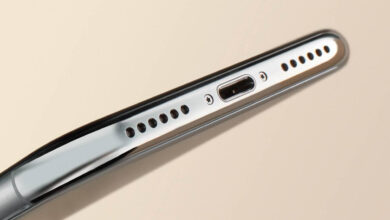Can Water Damage Phone Speaker? Understanding Audio Issues After Exposure

When your phone comes into contact with water, one of the components most vulnerable to damage is the speaker. The design of most phone speakers doesn’t protect against liquid invasion, and even a small amount of water entering the delicate parts can lead to distortion, muffled sound, or in some cases, complete speaker failure.
Understanding the risks and the immediacy required in finding a resolution can be the difference between a quick fix and a costly repair. If you act quickly, you might be able to save your phone’s speaker from lasting damage. However, if the water has already settled in, the speaker may produce distorted sounds or, worse, stop working entirely.
Protection and prevention are key. Many modern smartphones come with some water resistance, but this doesn’t guarantee safety for your speaker in the face of immersion or splashes. It’s important to know what to do should your phone speaker come into contact with water, as well as taking steps to mitigate the risk before any potential damage occurs.
Understanding Water Damage
When your phone encounters water, it’s the speaker’s delicate components that often face the immediate threat. Proper awareness of these risks helps you protect and possibly recover your phone’s audio capabilities.
How Water Affects Phone Speakers
Water entering your phone can lead to a range of issues for your speaker. It can:
- Muffle sound: Water obstructs the movement of the speaker’s diaphragm, leading to dampened audio output.
- Cause distortion: Even a small amount of moisture can interfere with the electrical signals, creating distorted or crackling sounds.
- Result in silence: Severe water exposure might completely halt the speaker’s function by damaging its internal wiring or components.
Types of Liquid Damage
- Clean Water: Exposure to plain water can corrupt a speaker, but quick and correct actions can sometimes reverse the effects.
- Contaminated Liquids: Beverages or saltwater can introduce additional contaminants that accelerate corrosion and damage sensitive circuits.
Symptoms of Water Damaged Speakers
When your phone speaker comes into contact with water, it can lead to a range of audio problems. Here’s what you might encounter:
Audio Issues
If you notice that your phone’s audio quality isn’t as clear as it used to be, water might have gotten into your speaker. Common audio issues include lower than usual volume output or irregular sound levels during playback.
Distortion and Crackling
You might hear distortion or crackling noises when playing music or during a phone call. These sounds indicate that the delicate components within your phone’s speaker may have been affected by moisture.
Muffled Sound Output
When water interferes with your speaker, your sound may become muffled. This can sound like your phone is covered with a cloth or like you’re listening through a pillow, resulting in unclear and subdued audio.
Immediate Response to Water Exposure
If your phone’s speaker comes into contact with water, swift and careful actions can mitigate damage. Here’s what you need to know and do immediately after water exposure.
Powering Down the Device
First and foremost, turn off your phone as soon as possible. This is crucial to prevent short circuits that could lead to more serious damage. To do this, hold the power button and follow your device’s specific instructions to shut it down.
Removing Excess Water
After powering down, remove any case and gently pat the phone dry with a soft, lint-free cloth. Avoid shaking or moving the phone violently as this could cause the water to spread to other parts of the phone. If possible, stand the phone upright to let any trapped water drain out naturally from the speaker grills. Avoid using heated devices like hairdryers as they can cause additional damage.
Professional Repair and DIY Solutions
When your phone’s speaker encounters water damage, you have a choice: seek professional repair or attempt a DIY fix. Knowing which route to take can save you time and maybe even your phone’s speaker.
When to Seek Professional Help
- Visible Damage: If you see physical damage to the speaker or phone, a professional should assess the situation.
- Persistent Issues: If the speaker is not working after trying basic drying methods, further DIY attempts may cause more harm.
Professional repair services come equipped with tools and expertise for precise diagnostics and repair that DIY methods can’t match.
DIY Speaker Repair
For tackling the problem at home, consider these steps carefully:
-
Immediate Action:
- Power off the phone.
- Remove any covers and shake out excess water.
-
Drying Techniques:
- Leave the phone in a dry, warm place for several hours.
- Insert the phone in a bag of uncooked rice or desiccants, which can help absorb the moisture.
-
Cleaning:
- Use a soft microfiber cloth to wipe the exterior.
- For the speaker mesh, gently dab with a cloth dampened with a mixture of 70% isopropyl alcohol and 30% distilled water.
DIY repair comes with risks, and if the problem persists or the speaker damage is severe, professional repair services are the recommended course of action to prevent further damage to your device.
Preventative Measures and Protective Accessories
Protecting your phone’s speaker starts with using the right accessories to prevent water intrusion. Here’s how you can safeguard your device from moisture damage effectively.
Waterproof Cases
Waterproof cases are essential if you frequently find yourself near water bodies or in environments where your phone might get wet. Look for cases that have an IP (Ingress Protection) rating, which indicates the degree of protection against water and dust. An IP67 or IP68 rating means your phone can withstand submersion in water to a certain depth for a specified duration.
Here are a few waterproof case options:
- Lifeproof FRE: A case with IP68 rating, suitable for swimming or surfing.
- Catalyst Waterproof Case: Also with an IP68 rating, it provides protection and easy access to buttons and ports.
- Ghostek Nautical: This case not only has an IP68 rating but also adds shockproof capabilities.
Screen Protectors
Screen protectors are not just for preventing scratches; they can also provide a seal against water. Invest in a high-quality screen protector that complements your waterproof case. A tempered glass protector is more durable than plastic ones and is better at resisting scratches which can compromise the integrity of the waterproof seal.
Recommendations for screen protectors:
- amFilm Tempered Glass Screen Protector: Offers good sensitivity and protection.
- Spigen Tempered Glass: Known for its durability and a perfect fit for the screen.
By using these protective accessories, you’re taking proactive steps to keep your phone’s speaker safe from water damage.
Impact of Water Damage on Phone Resale Value
When selling your phone, the condition of the device is paramount in determining its resale value. Water damage can negatively affect the value of your phone more significantly than many other forms of damage. Here’s what you need to know:
-
Functionality: If water enters your phone’s speaker, it can cause audio issues that buyers easily notice during a test. Muffled sound or a completely non-functioning speaker suggests to potential buyers that the phone has sustained significant damage, reducing their offer.
-
Aesthetics: Water damage often leaves behind telltale signs. Corrosion or discoloration, particularly around the speaker grill, can deter buyers, leading them to either devalue your phone or pass on purchasing it altogether.
-
Warranty and Repair Cost: Water damage typically voids manufacturer warranties. Potential buyers considering the cost of repair without warranty coverage will likely factor this into their price calculations.
Here’s a simple breakdown of how water damage might impact your phone’s resale value:
| Condition | Impact on Value |
|---|---|
| Fully Functional | Minimal Impact |
| Distorted Sound | Moderate Impact |
| Non-Functional | Significant Impact |
Remember, if you’re transparent about the condition of your phone, including any water damage, you’ll foster trust with potential buyers. However, be prepared for this honesty to reflect in their valuation of your device. Protect the speakers—and the investment in your phone—by avoiding exposure to liquids.
Understanding Warranty and Insurance
When dealing with water damage to your phone speaker, understanding your warranty and insurance options is crucial for navigating potential repair or replacement solutions.
Standard Manufacturer’s Warranty
Most smartphones come with a standard manufacturer’s warranty that typically lasts one year. This warranty often covers defects in materials and workmanship under normal use. However, water damage is usually not covered under such warranties, as it’s considered beyond normal wear and tear.
- Check your warranty: Review the terms carefully to see what’s included.
- Document and report: If you believe the issue is covered, contact the manufacturer immediately.
Phone Insurance Policies
If you have a phone insurance policy, it may offer more comprehensive coverage, including water damage. Policies vary, so understanding the details is key.
- Coverage specifics: Confirm whether water damage is included and under what conditions.
- Deductibles: Be aware of any deductible you may need to pay out-of-pocket for repairs.
- Claim process: Know how to file a claim and what documentation you’ll need.
Remember, phone insurance can provide a safety net, but you’ll need to balance the cost of the policy with the potential benefits.
Long-Term Effects of Water Damage
When your phone encounters water, the damage might not always be immediate, but over time it can wreak havoc on internal components.
Hardware Corrosion
Your phone’s speaker contains metals that are susceptible to corrosion when exposed to water. If moisture remains inside the speaker, it can oxidize the metallic parts, leading to:
- Permanent damage to the speaker coils and diaphragm, crucial for creating sound.
- The formation of rust over time, which can degrade the speaker’s connections and reduce sound quality.
Software Malfunctions
Water can also lead to software issues in your phone. Some specific problems include:
- Distorted audio output due to short circuits in the hardware that affect sound control software.
- Sensor malfunctions that cause your phone to behave erratically, as moisture impacts the delicate wiring and circuits that relay information to your phone’s operating system.
